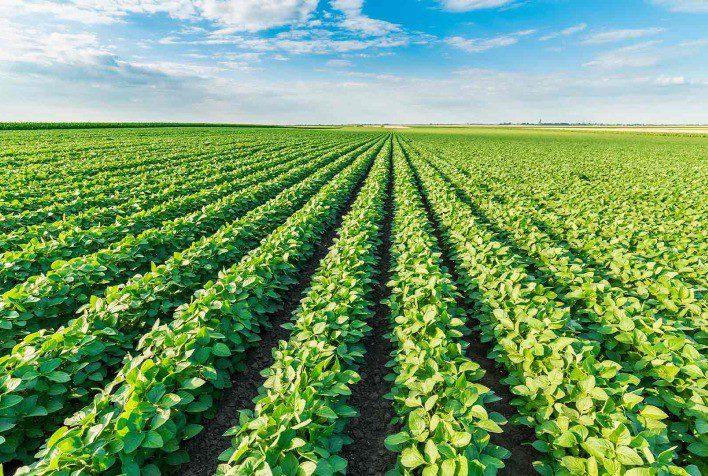Setting up your soybean crop for an remarkable start is not so much about following rules as it is indeed about reading the land’s pulse. As temperatures rise in April, many soybean growers weigh the merits of early planting; earlier dates help plants develop more nodes and intercept additional sunlight during May. Sometiems, a field planted just five days sooner can glean noticeably higher yields due to this extra light capture.
Uniform seed placement remains crucial—forgetting this one step undermines months of effort upstream and downstream. Seeds settled at 1 to 1.5 inches deep are commonly optimal; under tillage, some practitioners go out as far as 1.75 inches when they sense moisture further down or anticipate heavier rainfall patterns that saturate upper soil layers swiftly. Yet, if you’re using a no-till system in moist soils, set planter depth shallower: anything beyond a single inch risks delayed emergence or patchy stands.
Farmers do not always agree on row spacing—it is true that rows narrower than 30 inches have generated stronger yield responses compared with conventional wider setups in multiple regions over recent seasons, notably on fields where sunlight utilization makes a measurable difference by June afternoons. Those pushing for ultra-narrow rows have even trialed skip-row arrangements: these allow passage of heavy postemergence spray equipment while maintaining sufficient canopy closure (and afterward improved weed suppression) without sacrificing most yield potential from densely planted stands.
Soil temperature at planting ideally hovers somewhere above fifty degrees Fahrenheit—the seed becomes sluggish below that mark regardless how anxious an operator may be to get rolling after long winter idleness (or impatience). Soil testing guides necessary pre-plant fertilizer adjustments; emphasizing phosphorus and potassium levels especially matters on low-testing ground where suboptimal fertility stymies root establishment during sensitive early development stages.
Quality seed selection deserves more emphasis than it sometimes receives among seasoned producers—high germination rates paired with tolerance traits aligned to anticipated disease pressure establish sound foundations for robust emergence percentages across entire blocks. In years shaped by erratic rainfall events—or sudden extended droughts—a blend of maturities flattens risk curves but not all insurance agents mention this strategy unless prompted directly by inquisitive clients.
Populations are calibrated based principally on row width distributions and hybrid vigor data from past site-specific performance plots; typically ranges hover between 120,000 and 160,000 seeds per acre though there have been triumphant crops at both lower and higher ends depending upon local conditions or available irrigation backup—which paradoxically sometimes increases final stand because drought stress can thin stands less when irrigation manages early competition among seedlings better (though too much water early never helps). Notably,population choices also morph depending upon intended end use—a few grain contracts encourage dense sowing whereas those growing food-grade beans often opt for lesser crowds aiming toward larger single-bean size.
Occasionally overlooked factors like planter calibration affect not only seeding rate but depth consistency: check each unit’s function before plunging into lengthy field sessions as worn parts introduce unpredictable skips or doubles which amplify population errors already present due to varying seed size lots within identical bags purchased under different lot numbers last autumn (unless buying treated certified stock—then variation narrows).
Ensuring good soil contact is concurrently science and intuition; press wheels may need adjustment on heavier soils versus sandy loams where crust formation after rain sets fast yet shatters evenly if seeds are properly pressed-in but left close enough to breath still beneath fine firmed earth particles—that somewhat contradictory phrase holds truth only planters know well after watching weather change mid-operation twice in three years running.
Although later-planted soybeans should be established slightly deeper should spring remain dry into late May—increasing planting depth brings seed closer still-moist subsurface bands reducing the likelihood shallow-root dieback occurs post-germination as surface layers bake off moisture rapidly during unseasonable heat spells yet nobody should exceed maximum recommended depths hoping for miracles overnight because thick compaction zones rarely forgive such optimism until the next rainfall event resets expectations anew.
Organic matter manipulation presents another lever many overlook: modest crop residue ensures improved fuel efficiency during establishment yet excessive surface debris may chill topsoil longer causing uneven warming delays which must be reconciled against intended field operations schedule rather than theoretical optimum timelines—it becomes abundantly clear walking freshly disked acres just ahead of a cold front billowing over western fencerows unexpectedly late one evening.
In conclusion—and bearing slight repetition though unintentionally—the best start results from adapting evolving management protocols dynamically rather than adopting static routines year after year without recalibration based on emerging research findings plus nuanced observations unique unto each parcel worked every season anew.

